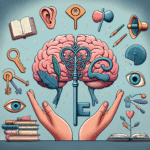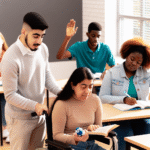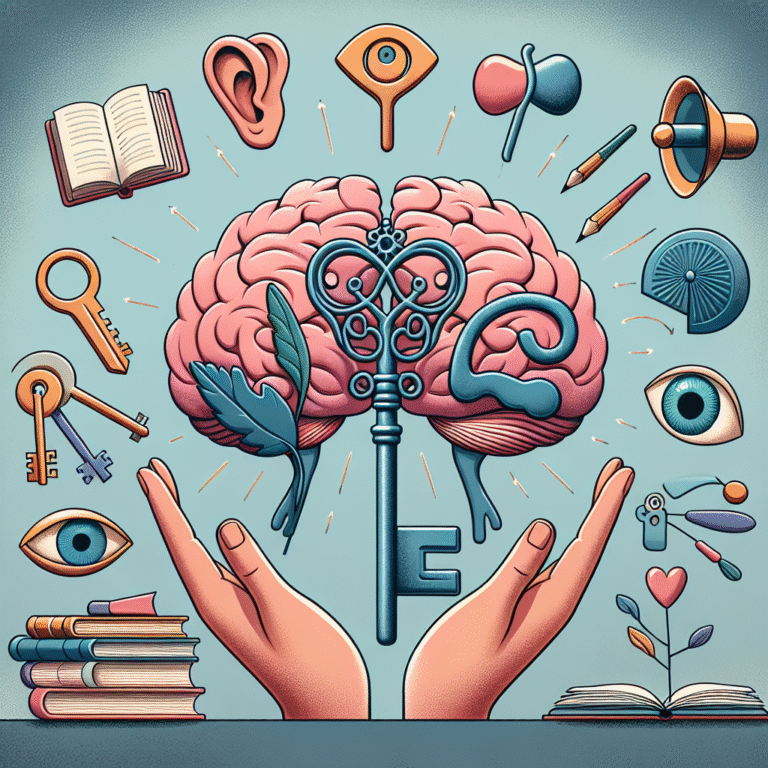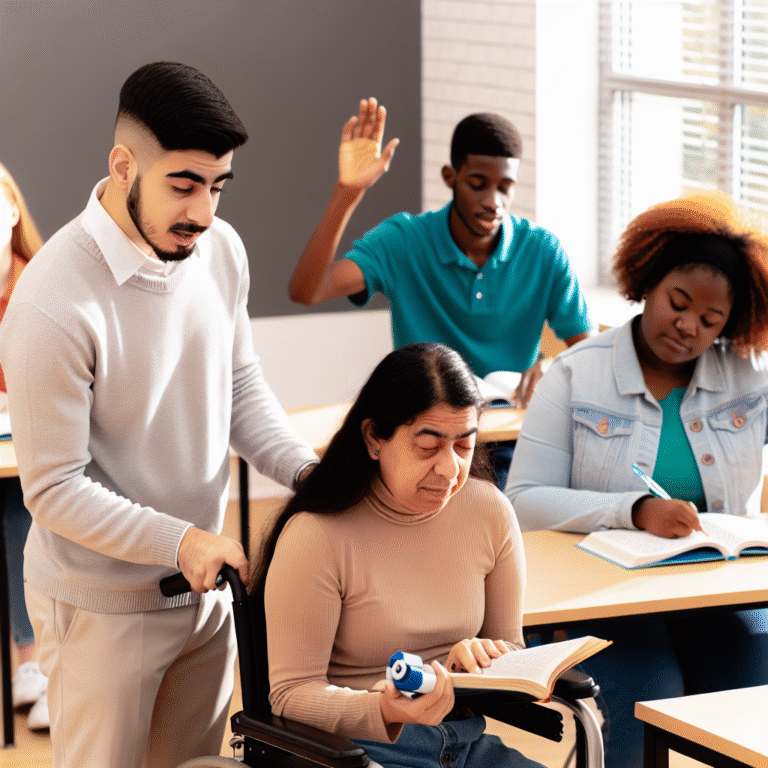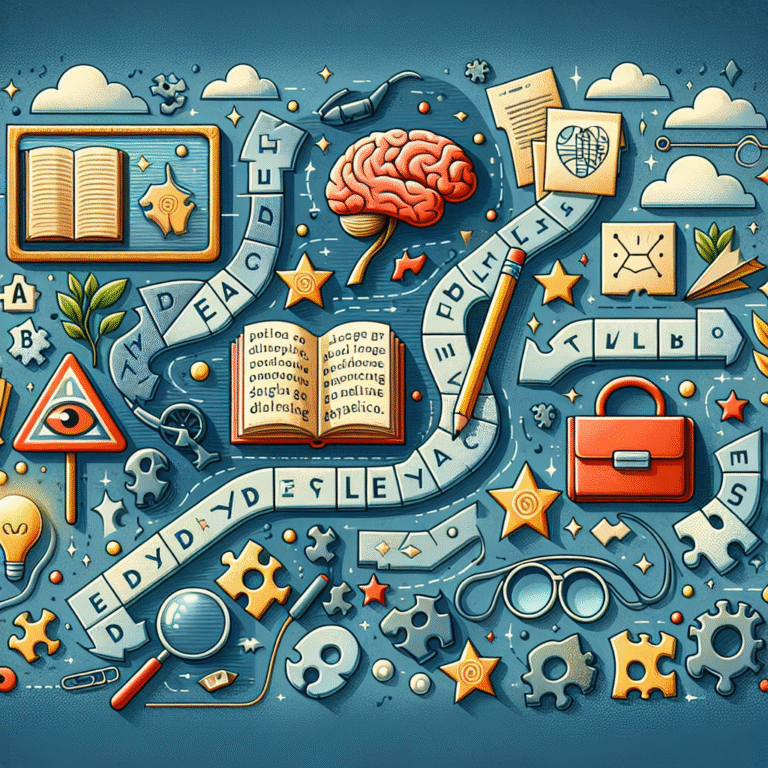
From Testing to Tutoring: Essential Resources Every Parent Should Know for Learning Disabilities
Introduction
Navigating the world of learning disabilities can feel like traversing a complex maze. As a parent, you want the best for your child—support, understanding, and the right tools to help them succeed. But where do you start? From testing to tutoring, knowing the key resources is crucial. In this article, we will explore the essential information, strategies, and support systems available for parents, ultimately empowering you to advocate effectively for your child’s learning journey.
Understanding Learning Disabilities
What Are Learning Disabilities?
Learning disabilities (LD) encompass a range of disorders that affect how individuals understand or use spoken or written language, perform mathematical calculations, or process information. It’s crucial to recognize that having a learning disability doesn’t reflect a child’s intelligence. Instead, it reflects a difference in how their brain processes information.
Common Types of Learning Disabilities
- Dyslexia: Difficulty with reading and interpreting words.
- Dysgraphia: Challenges with writing and organizing thoughts on paper.
- Dyscalculia: Problems with numbers and math concepts.
- Attention Deficit Hyperactivity Disorder (ADHD): Difficulty focusing and following through on tasks, often overlapping with other learning disabilities.
The Importance of Early Identification
From Testing to Tutoring: Key Resources Every Parent Should Know for Learning Disabilities must begin with early identification. Research shows that early intervention can significantly improve outcomes for children with learning disabilities. Recognizing the signs—such as difficulties in reading, writing, or math—can lead parents to seek evaluations sooner rather than later.
Testing: The First Step in the Journey
Types of Assessments
Understanding your child’s specific learning needs starts with comprehensive testing. Common assessments include:
- Psychoeducational Assessments: Evaluates cognitive abilities and academic skills.
- Behavioral Assessments: Helps identify ADHD or other behavioral issues.
- Standardized Tests: Measures academic performance against national standards.
The Evaluation Process
The evaluation can be a daunting process for both parents and children. Here’s what to expect:
- Initial Screening: Often conducted by teachers or school counselors to identify potential learning issues.
- Comprehensive Testing: Involves a psychologist or educational specialist who tests cognitive abilities and academic skills.
- Feedback Session: Provides insights into your child’s strengths, challenges, and proposed interventions.
Case Study: Early Intervention Success
Consider Sarah, a 7-year-old diagnosed with dyslexia after a comprehensive evaluation. By identifying her learning disability early, her school implemented a personalized learning plan, incorporating phonics instruction and tailored reading materials. Within a year, Sarah’s reading skills significantly improved, demonstrating the power of early intervention and the role of comprehensive testing.
Transitioning to Tutoring
The Role of Tutoring in Learning Disabilities
Once testing is complete and you understand your child’s needs, tutoring can offer essential support. Unlike traditional classroom settings, tutoring can provide tailored, one-on-one guidance that respects your child’s unique learning style.
Benefits of Specialized Tutors
- Individualized Attention: One-on-one support focuses on specific challenges.
- Flexible Methods: Tutors can adapt their teaching style to suit your child’s learning preferences.
- Boosts Confidence: Personalized tutoring often helps improve self-esteem as children experience success.
Choosing the Right Tutoring Service
When selecting a tutor, consider the following:
- Experience with Learning Disabilities: Ensure the tutor has specific training or experience dealing with learning disabilities.
- Teaching Style: Inquire about their methods and flexibility to switch approaches if necessary.
- Feedback and Communication: Look for tutors who maintain open communication with parents and provide regular progress updates.
Case Study: Transformative Tutoring
Take Jake, a 10-year-old with dyscalculia. After struggling in school for years, his parents found a tutor who specialized in math learning disabilities. The tutor employed manipulatives and visual aids, allowing Jake to grasp concepts he previously found daunting. Over six months, Jake’s math score improved significantly, and his confidence grew exponentially.
Essential Resources for Parents
1. National Center for Learning Disabilities (NCLD)
The NCLD offers a wealth of resources, including information on learning disabilities, advocacy tips, and connections to local services. Their parent toolkit provides a roadmap to navigating the systems affecting your child’s education.
2. Understood
Understood.org is an invaluable platform dedicated to helping parents of children with learning disabilities. It provides insightful articles, expert advice, and a community for shared experiences. The “Find Support” option connects parents with local resources tailored to their needs.
3. Local Education Agencies (LEAs)
Every state has its own education system and resources for children with learning disabilities. LEAs often provide special education services, including Individualized Education Programs (IEPs) and 504 plans. Engaging with your LEA can help you access personalized educational resources.
4. Online Tutoring Platforms
Today, many online platforms specialize in tutoring for learning disabilities. Websites like Smartick for math or Reading Rockets for reading comprehension offer interactive tools and programs that can be accessed from home.
5. Support Groups and Local Advocacy Organizations
Connecting with other parents can make a world of difference. Local advocacy groups often host meetings, workshops, and events that educate parents on navigating the complexities of learning disabilities.
6. Helpful Apps and Technology
Tech solutions can enhance learning experiences for children with learning disabilities. Apps like GUILD for dyslexia or Brainly are beneficial for quick homework help or reinforcing concepts in a more engaging way.
Actionable Steps for Parents
Building a Support Network
Creating a solid support network is crucial. Engage with teachers, school counselors, and other parents. This not only ensures a collaborative approach to your child’s education but also eases the emotional stress often associated with learning disabilities.
Effective Advocacy
Parents must advocate for their child’s educational needs. Familiarize yourself with special education laws like the Individuals with Disabilities Education Act (IDEA) and Section 504 of the Rehabilitation Act. Understanding these laws prepares you for discussions with educators and administrators about your child’s rights and services.
Fostering a Growth Mindset
Encouraging a growth mindset in your child is vital. Celebrate small victories, reinforcing their ability to learn and improve. Positivity can motivate them to tackle their challenges head-on.
Creating a Conducive Learning Environment
At home, establish a dedicated homework area with minimal distractions, adequate lighting, and the necessary learning tools. Additionally, work with your child’s teacher to implement and reinforce strategies learned in tutoring sessions, ensuring consistency between home and school.
Conclusion
From Testing to Tutoring: Key Resources Every Parent Should Know for Learning Disabilities is just the beginning of an empowering journey. Armed with knowledge, support, and resources, you can help your child navigate their learning path with confidence and resilience. Remember, every child’s journey is unique, and together, we can create a brighter future for those learning differently.
FAQs
1. How do I know if my child has a learning disability?
Look for signs such as difficulties with reading, writing, math, or understanding instructions. Consult with teachers for input, and consider a formal evaluation from a psychologist or educational specialist if concerns persist.
2. What is an Individualized Education Program (IEP)?
An IEP is a personalized education plan designed for students with identified disabilities, outlining specific educational goals and the services the school will provide to help the child succeed.
3. Can learning disabilities be cured?
While learning disabilities cannot be cured, with appropriate interventions, tutoring, and accommodations, children can learn strategies that help them succeed academically and socially.
4. How can I support my child at home?
Create a structured learning environment, provide positive reinforcement, and utilize resources such as apps and tools that reinforce the skills being taught in school or during tutoring sessions.
5. Should I tell my child about their learning disability?
Open communication helps children understand their learning style. Explain their learning disability in an age-appropriate way, framing it positively, so they understand it as a difference, not a deficit.
6. How can I find a qualified tutor for my child?
Look for tutors with experience in special education, qualifications in teaching methods specifically targeted for learning disabilities, and personal familiarity with your child’s learning challenges. Online reviews and recommendations from other parents can also guide you in selecting the right tutor.
With these resources, pathways, and the resolve to advocate for your child, you’re not just raising a child with a learning disability; you’re nurturing a capable and resilient learner ready to face the world.
